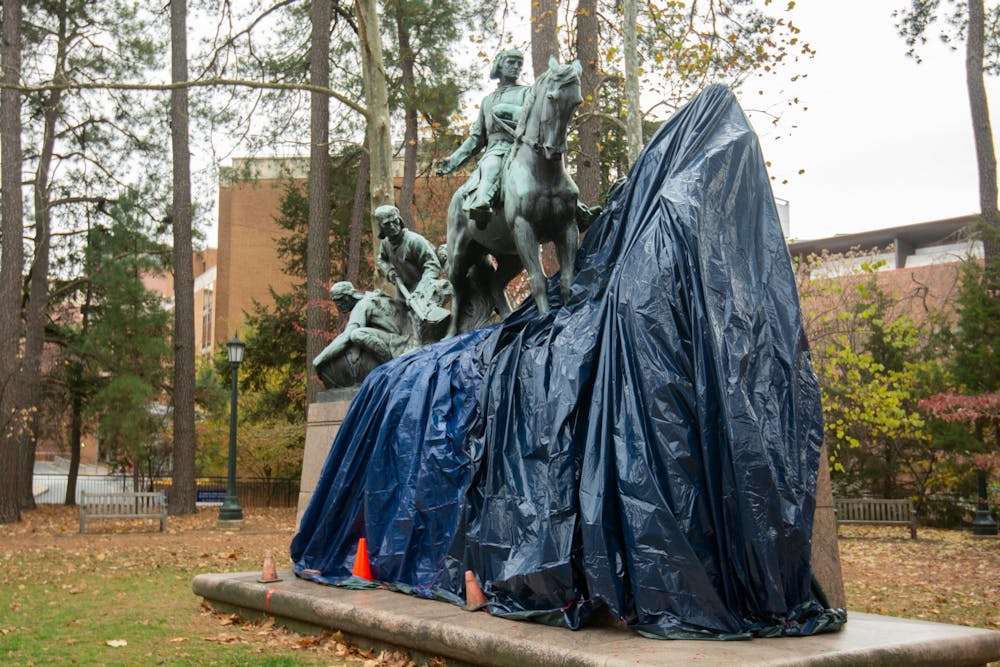The University’s statue of George Rogers Clark was found defaced with red paint Sunday morning. University police responded to the defacement by covering the statue with a dark blue tarp. This incident is under further investigation by UPD.
The statue, located on University property by the intersection of West Main Street and Jefferson Park Avenue, has been widely criticized for its depiction of an attack on a Native American family. Clark is seen riding horseback with a group of Native Americans kneeling in front of him, while soldiers brandish weapons in the back. The statue’s inscription reads “George Rogers Clark: Conqueror of the Northwest.”
Clark, who was born in Albemarle County, was a war general who fought Native American tribes as the U.S. expanded westward following the American Revolution. The statue was donated to the city of Charlottesville in the early 1920s by Paul Goodloe McIntire, a prominent University benefactor who also donated the statues of Confederate generals Robert E. Lee and Thomas “Stonewall” Jackson to the City.
Earlier this summer, local Virginia activist David Swanson circulated a petition urging University administration to “remove the statue of George Rogers Clark engaged in genocide to a museum where it can be presented as a shameful memory.”
According to the petition, Clark said that he would like to “see the whole race of Indians extirpated” and that he would “never spare Man, woman or child of them on whom he could lay his hands.” His statue was added to the National Register of Historic Places in 1997. Former University president Edwin Alderman praised Clark for creating an empire of Virginia, the petition reads.
On Friday, City Council passed a resolution for the removal of a statue depicting Lewis, Clark and Sacagawea that resides on West Main Street's major intersection. During the meeting, representatives from two Native American tribes referred to the statue as inaccurate and offensive.
This article has been updated.







